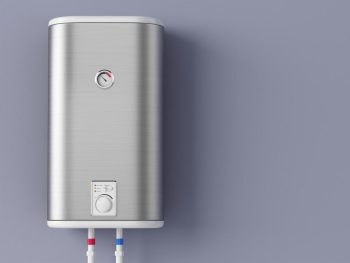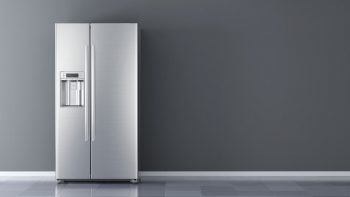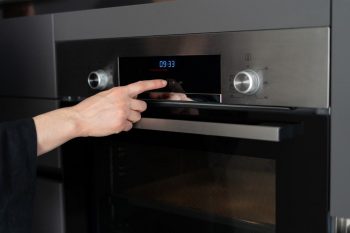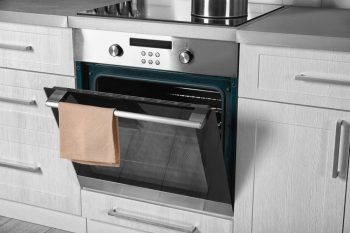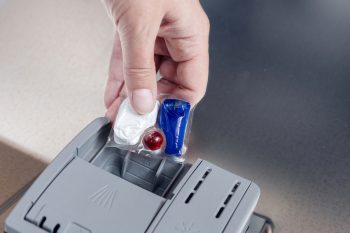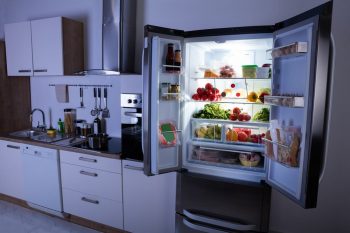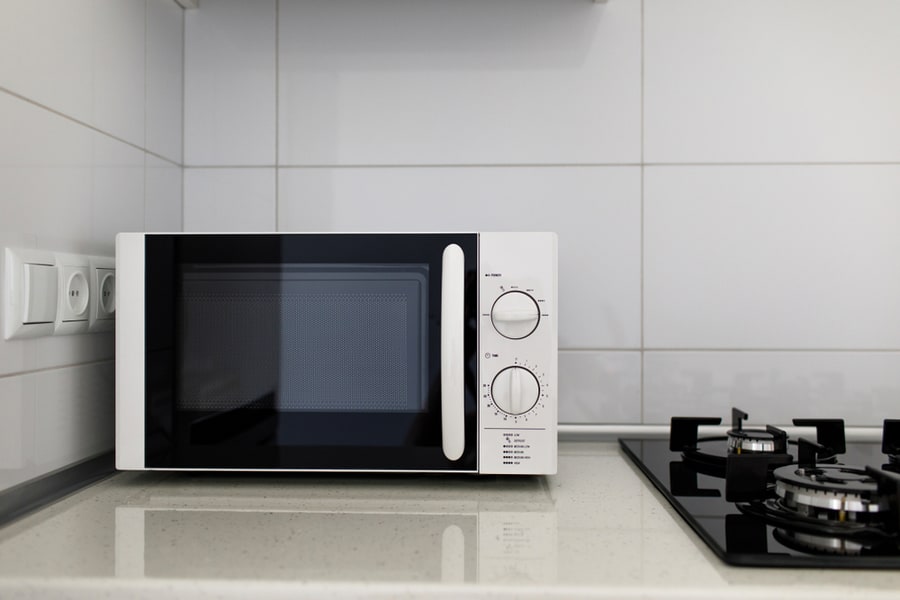
Microwaves have become a staple in most kitchens. They are a convenient and efficient way to cook or heat food quickly. However, they can sometimes develop problems requiring attention, such as water leakage.
If you notice water leaking from your microwave, it is essential to immediately prevent damage to your appliance and avoid any major hazard.
Microwave leakage is more common than you think. People worldwide cook food in microwaves, resulting in steam and spills that flood the microwave, causing leakage problems.
Water leaking from a microwave can be caused by several issues that have specific fixes/repairs.
Below is a general guide on what to do in a microwave leak:
- Turn off and unplug the appliance.
- Clean the leaked water.
- Inspect the microwave for any potential issues.
Call a professional technician to assist you if you detect any unusual issues.
This article discusses the causes of microwave leaks and what to do if you are experiencing them. You also learn about some helpful tips for preventing microwave water leaks in the first place.
What Causes Water Leakage in Your Microwave
Microwaves are designed to heat food and not water. However, moisture can build up inside the microwave for various reasons, such as spills, condensation from cooking, overheating, or steam generated from cooking certain types of food.
This moisture can accumulate over time and cause the microwave to leak water.
Here are ten reasons that can cause a microwave to leak water:
1. Overheating

When a microwave overheats, it can cause water to evaporate, creating condensation that collects on the walls and ceiling of the oven. Overheating can occur due to a malfunctioning thermostat or incorrect microwave use.
2. Damaged Door Seal

The door seal is a crucial microwave component that prevents moisture and heat from escaping. If it becomes damaged, it will cause the spilled or condensed water to leak out of the oven during cooking.
3. Faulty Gasket

The gasket is a seal between the floor and the microwave body. If it becomes worn or damaged, it will make the water leak out of the oven during or after the cooking session.
It is necessary to get it repaired or replaced. For example, some microwave ovens do not function with a faulty gasket.
4. Cracked Interior

A crack in the interior of the microwave can allow water to seep into the unit during cooking. This is more likely to occur in older microwaves or those subjected to physical damage.
During a prolonged cooking session, the steam from the heated microwave components can seep into the plate and leak when the door is opened.
5. Poor Ventilation
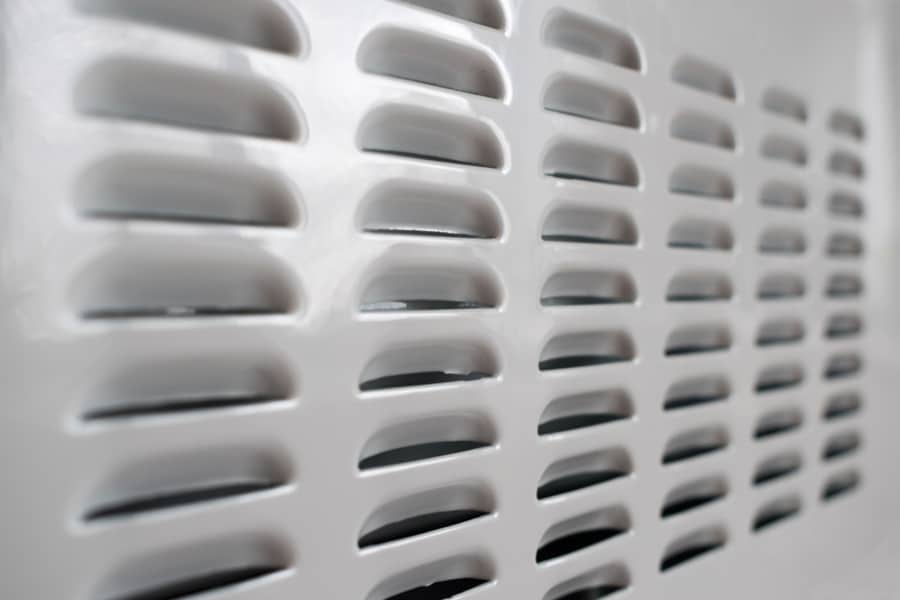
Proper ventilation is essential to prevent condensation from building up inside the microwave. The vents are typically placed on top or the side of the microwave.
If the vents are blocked, or the fan is not working correctly, moisture can accumulate, causing water to leak from the microwave.
6. Improper Use of Containers
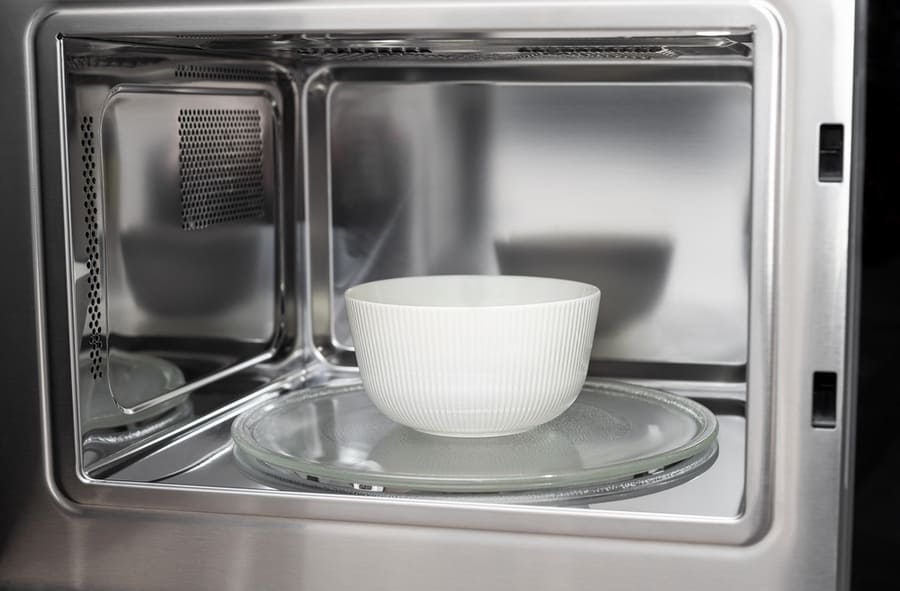
Some containers are unsuitable for microwave use and can cause water to leak during cooking.
Glass containers can crack, and plastic containers can melt, causing the water to seep. These leaks can be cleaned easily and do not require mechanical repairs.
7. Splatters and Spills

Sometimes, the food being cooked in the microwave gets overheated and spills out of the dish/container.
When the food splatters or spills in the microwave, it can create moisture that can collect on the walls and ceiling of the oven, causing water to leak out.
8. High Humidity

This is a rare phenomenon but is possible in high-humidity regions. High humidity levels in the environment can cause moisture to collect inside the microwave during cooking, resulting in water leakage.
9. Clogged Drain Hole
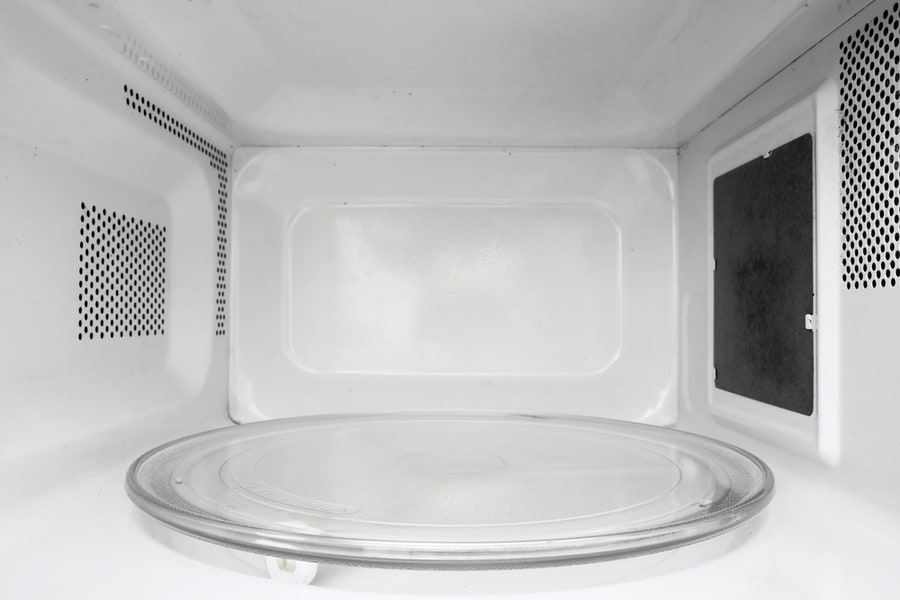
Some microwave models come with a drain hole and a drip pan. They drain any water that spills into the drip pan, which you can later remove.
When the drain hole in the microwave becomes clogged with food particles, it causes the water to collect inside the microwave and spill when the door is opened.
10. Malfunctioning Control Board
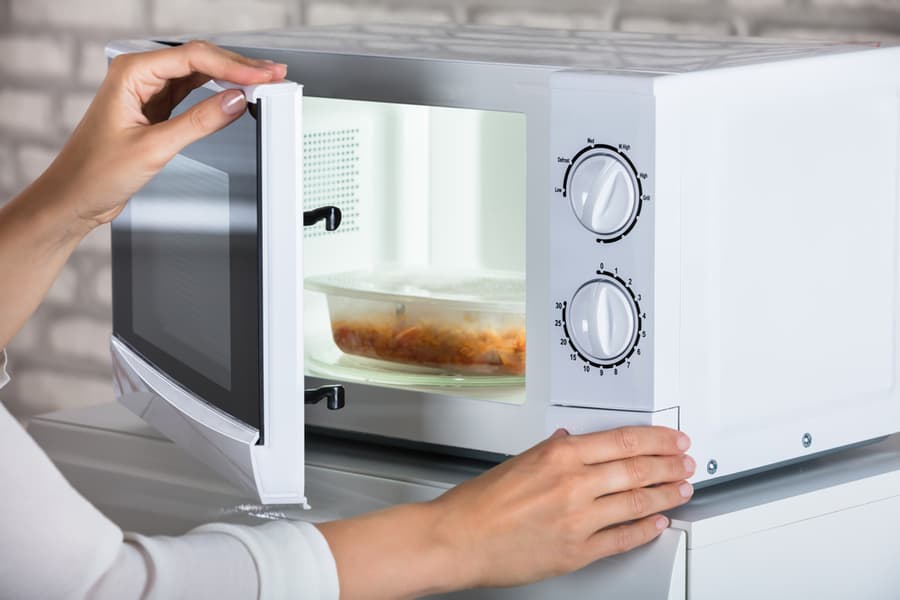
This only happens if your microwave is a newer and advanced model.
The control board regulates the microwave’s temperature and can malfunction, causing the oven to overheat and create condensation that can collect on the walls and ceiling of the oven.
What To Do if Your Microwave Is Leaking
A leaking microwave can be a frustrating problem, but with a little effort, it can be resolved.
Follow these steps to resolve the water leakage issue:
1. Turn Off and Unplug the Microwave
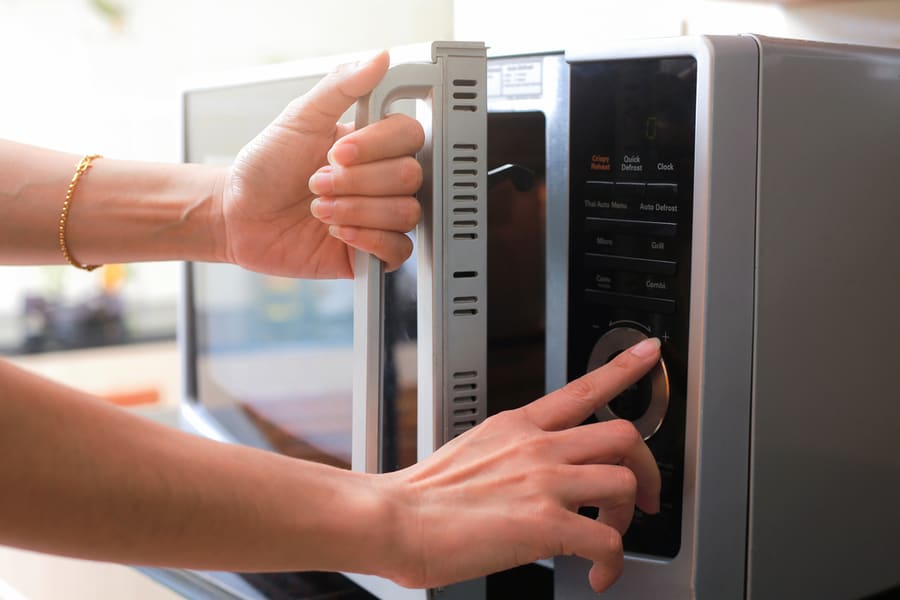
The first step in dealing with a leaking microwave is to turn it off and unplug it from the power source. This will ensure no electricity flows through the appliance and reduce the risk of electrical shocks.
It makes it safer for you or the professional technician to examine the cause of the leak or clean around it. Always be sure to wear safety gear (safety gloves and goggles) when dealing with repairs of electrical appliances.
2. Clean Up the Water
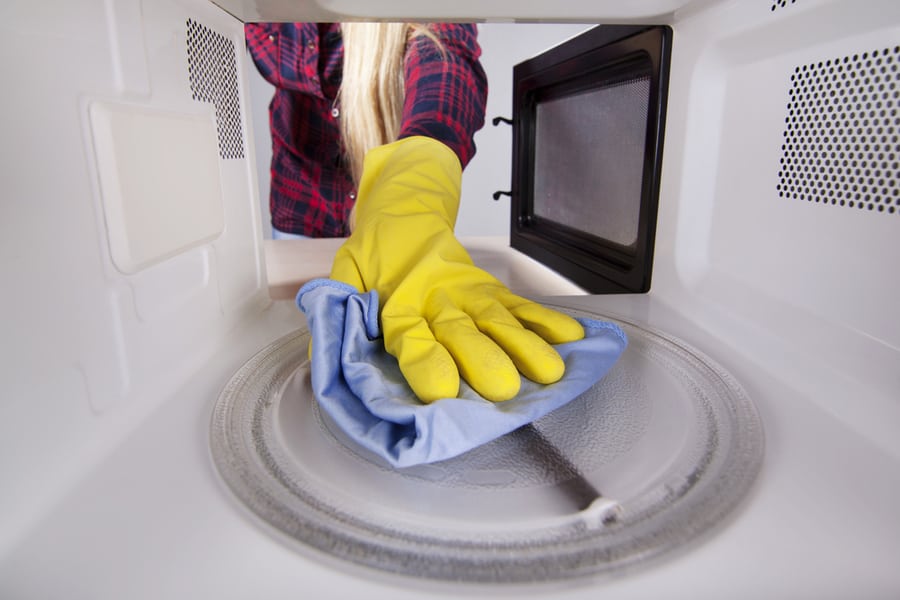
Using a dry cloth or paper towel, clean up any water leaking from the microwave. It is essential to do this carefully to avoid getting any water on the appliance’s electrical components.
If the water touches any active power source or a live wire, it can cause fatal damage to you or the appliance. It can also start an electric fire. Therefore, clean the leaked water before you move on to the next steps.
3. Inspect the Microwave

Once the water has been cleaned up, inspect the microwave thoroughly for any signs of damage or defects that could be causing the leakage.
Numerous reasons may cause the microwave to spill; you need to examine all of them and pinpoint the cause.
Check the door seal, hinges, loose parts, and any other microwave parts that may be causing the problem.
4. Check the Door Seal
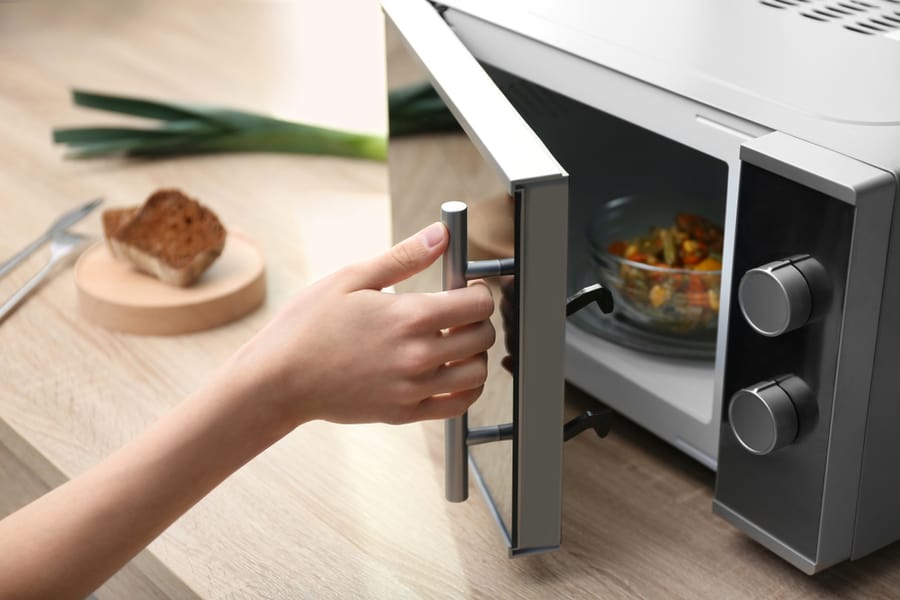
The door seal is a rubber gasket that surrounds the microwave door. Over time, this seal can become worn or damaged, causing the water to leak out.
A faulty door seal will also prevent your microwave’s door from closing properly, inviting dust and dirt inside the microwave. Small critters can also get inside your microwave and crawl further in, causing damage to the electrical components.
Check the seal for any cracks or tears, and replace it if necessary.
5. Check the Hinges
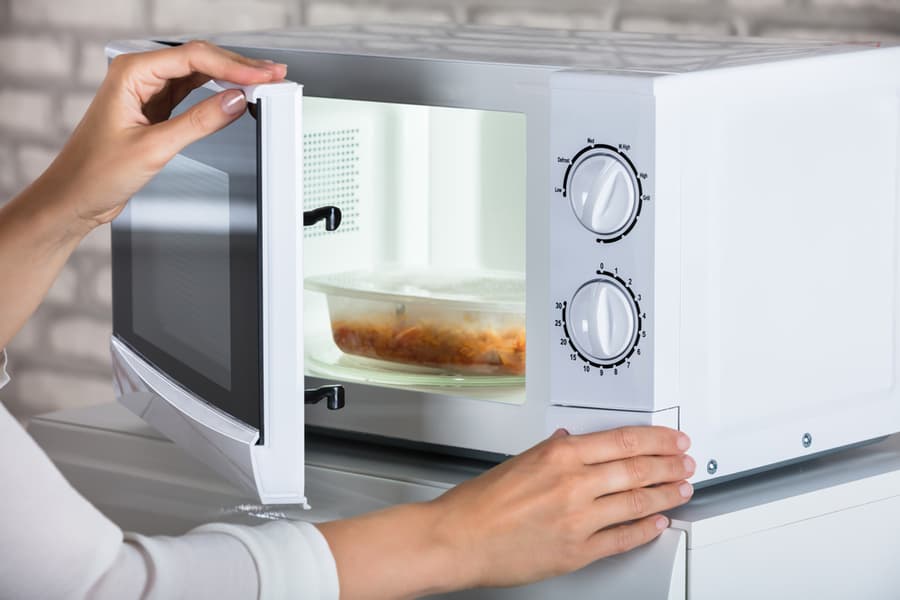
Hinges are the most important component of any machine. They hold the machine together, ensuring its parts are in place and working efficiently. Unfortunately, the hinges are another common cause of water leakage in microwaves.
If the hinges are loose or damaged, they can cause the microwave door to not close correctly, allowing water to leak out. Check the hinges for any signs of damage and replace them if needed.
6. Check the Microwave’s Venting System

The venting system in a microwave is responsible for removing steam and moisture from the microwave during cooking. If the vent is blocked or not working correctly, it can cause water to build up inside the microwave and leak out.
In case of heavy condensation inside the microwave, other microwave components can get damaged by water. Check the vent for any signs of blockage and clean it if necessary.
If it is blocked, remove the obstruction yourself or call a professional technician for assistance.
7. Call a Professional
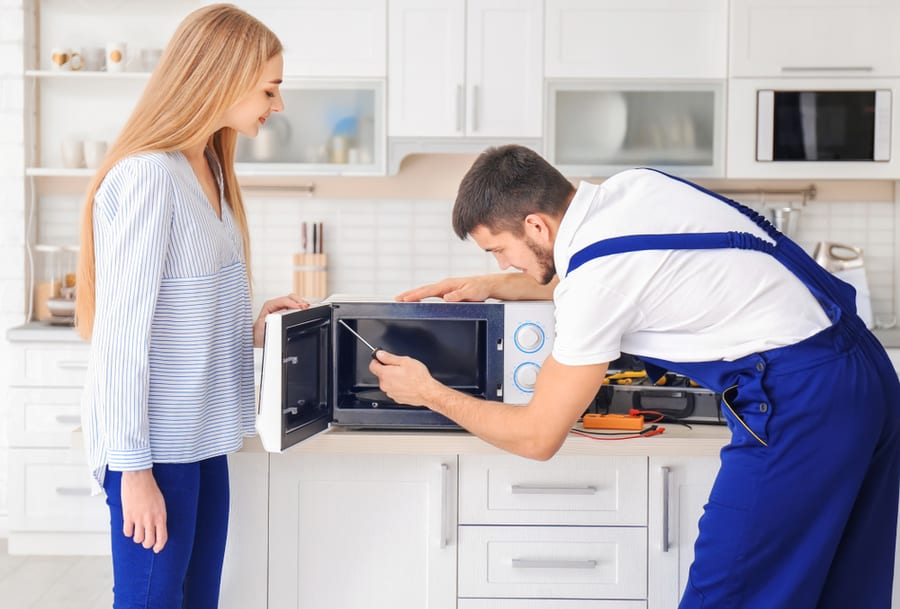
You may fix the leakage if you have any prior experience fixing or repairing appliances. But it is always best to have a professional examine and repair it.
If you can not identify the source of the water leakage, or if the problem persists after attempting to fix it, it may be time to call a professional. A trained technician can diagnose the problem and make the necessary repairs to your microwave machine.
Tips for Preventing Water Leakage in Microwave

Water leakage in a microwave can be a serious issue that can cause damage to the appliance and pose a safety hazard.
Here are some tips to prevent water leakage in your microwave:
- Use Microwave-Safe Containers: When heating or cooking food in the microwave, always use containers labeled as microwave-safe. These containers are designed to withstand the heat generated by the microwave without cracking or warping, which can cause water to leak out.
- Keep the Doors and Seals Clean: Dirt, food, and debris can accumulate on the door and seals over time, causing water leakage. Clean the door and the seal regularly with a damp cloth or sponge to remove any buildup.
- Check the Seals for Damage: Inspect the seals around the microwave door regularly to ensure they are in good condition. If you notice any cracks, tears, or other damage, replace the seals immediately to prevent water leakage.
- Use a Cover When Heating Liquids: When heating liquids in the microwave, use a cover to prevent splatters and spills. This will prevent water from leaking out and keep the inside of the microwave clean.
- Avoid Overcooking the Food: Overcooking food in the microwave can cause it to release moisture, which can lead to water leakage. Avoid over-cooking food and follow the instructions on the package or recipe. If you need to reheat food, add a small amount of water or broth to the container to prevent the food from drying.
- Use a Drip Tray or Plate: Place a drip tray or plate under the container to catch any spills when cooking or to heat food that may release moisture or liquids. This will prevent water from leaking out of the microwave and also make cleanup easier.
- Avoid Using High-Power Settings: Using high-power settings to heat or cook food in the microwave can cause the water molecules in the food to evaporate rapidly, creating steam. This steam buildup may cause water leakage. To prevent this, use low-power settings and take breaks to stir the food and allow the steam to escape.
- Maintain the Microwave Regularly: Regular appliance maintenance will keep it safe from damage and help prevent leakage. Over time, the seals can wear out, and the appliance may become less efficient or develop other problems that can lead to water leakage. Follow the manufacturer’s recommended maintenance schedule and make timely repairs if needed.
Conclusion
If you are experiencing a leaking microwave, you can resolve it with a little effort. All you need to do is to follow the steps outlined in this article to identify and fix the problem.
Always turn off and unplug the microwave before attempting any repairs, and if in doubt, call a professional. Proper maintenance lets you keep your microwave in good working order and avoid potential safety hazards.
Frequently Asked Questions
How Long Should a Microwave Last, and When Should I Consider Replacing It?
The lifespan of a microwave oven depends on several factors, such as its quality, usage frequency, and maintenance. However, on average, a microwave lasts 5-10 years with proper care and maintenance.
However, some high-end models can last up to 15 years or more. If your microwave is experiencing frequent breakdowns that can not be easily repaired, unusual noise when in use, burning smells or sparks, or other severe problems.
Then it may be time to consider replacing it. If your microwave is over ten years old, replacing it may be more cost-effective than continually repairing it.
Can I Use Metal in My Microwave?
No, it is not safe to use metal in a microwave. Metal objects can cause sparks and fires and damage the microwave oven.
In addition, the microwaves in the microwave oven are designed to be absorbed by food.
When microwaves come into contact with metal, they bounce off and can create an electrical current, which can cause a spark. This can lead to a fire, which can be dangerous and even deadly.


